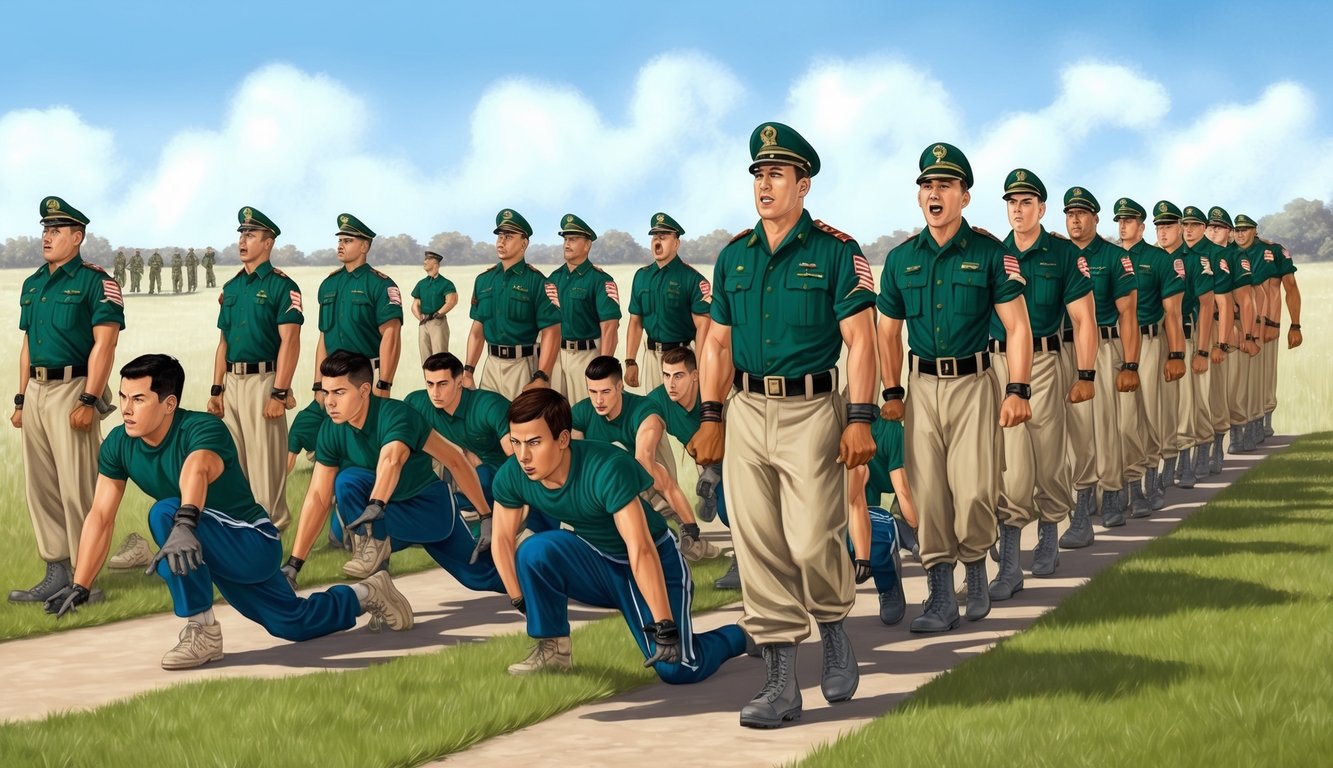“`xml
Are you considering enlisting in the Army in 2024? Prepare yourself for an exhilarating journey that commences with basic combat training.
This vital stage converts civilians into soldiers, providing you with necessary skills and instilling fundamental Army values.
The start dates for basic training in 2024 are spread throughout the year, with new cycles generally commencing every few weeks.
As you gear up for this transformational experience, it’s essential to know what to expect.
Basic training spans 10 weeks and focuses on a range of subjects including physical fitness, weaponry handling, teamwork, and discipline.
You’ll encounter tests that challenge your limits, but the unparalleled sense of achievement at graduation is well worth it.
Whether your training will take place at Fort Jackson, Fort Leonard Wood, or another facility, your adventure kicks off as soon as you step off the bus.
From day one, you’ll dive into the Army lifestyle, discovering what it means to contribute to a larger mission.
Prepare to embark on a life-changing journey that will lay the groundwork for your military career.
Key Takeaways
- Basic training start dates in 2024 are flexible, providing options for new recruits.
- The program lasts 10 weeks and covers crucial soldiering skills while embodying Army values.
- Graduation marks a significant milestone in your journey to becoming a U.S. Army soldier.
Understanding Army Basic Training
Army Basic Training reshapes civilians into soldiers through demanding physical and mental challenges.
You’ll acquire essential military skills, learn discipline, and embrace core values throughout this rigorous program.
What Is Basic Combat Training?
Basic Combat Training (BCT) is your introduction to Army life, lasting 10 weeks.
You’ll enhance your physical fitness, familiarize yourself with military customs, and master combat skills.
BCT is designed to challenge you and foster strength and resilience.
The training is conducted across various locations in the U.S. You’ll reside in barracks with fellow recruits and adhere to a rigorous daily schedule featuring early mornings, strenuous workouts, and classroom sessions.
You will learn how to handle weapons, navigate different terrains, and collaborate as a team.
BCT also encompasses first aid training, communication skills, and military law.
The Core Values and Discipline in Basic Training
Discipline serves as the cornerstone of Army life.
You will learn to follow orders promptly and accurately, making attention to detail a natural skill as you become proficient in tasks like making your bed according to strict specifications.
The Army’s core values underpin everything you do:
- Loyalty
- Duty
- Respect
- Selfless Service
- Honor
- Integrity
- Personal Courage
These principles shape your character and influence your decision-making.
You’ll continually be evaluated on these values throughout BCT.
Drill sergeants enforce rigorous standards, and their stern methods help cultivate your mental fortitude and self-discipline.
Overview of Army Basic Training Phases
BCT is composed of three primary phases:
Red Phase: This initial stage prioritizes physical fitness and foundational military skills.
You’ll learn drill and ceremony, Army traditions, and the proper way to wear your uniform.
White Phase: This phase deepens your understanding of combat techniques.
Marksmanship training, tactical movements, and field exercises will dominate your daily activities.
You’ll also tackle obstacle courses that build your confidence.
Blue Phase: The final phase tests your newly acquired skills.
More intricate field training exercises and weapon qualification become your focus.
Teamwork is essential as you gear up for graduation.
Each phase serves as a building block, incrementally preparing you to serve as a soldier.
By the conclusion, you will be ready to take pride in your service to the Army.
2024 Basic Training Calendar
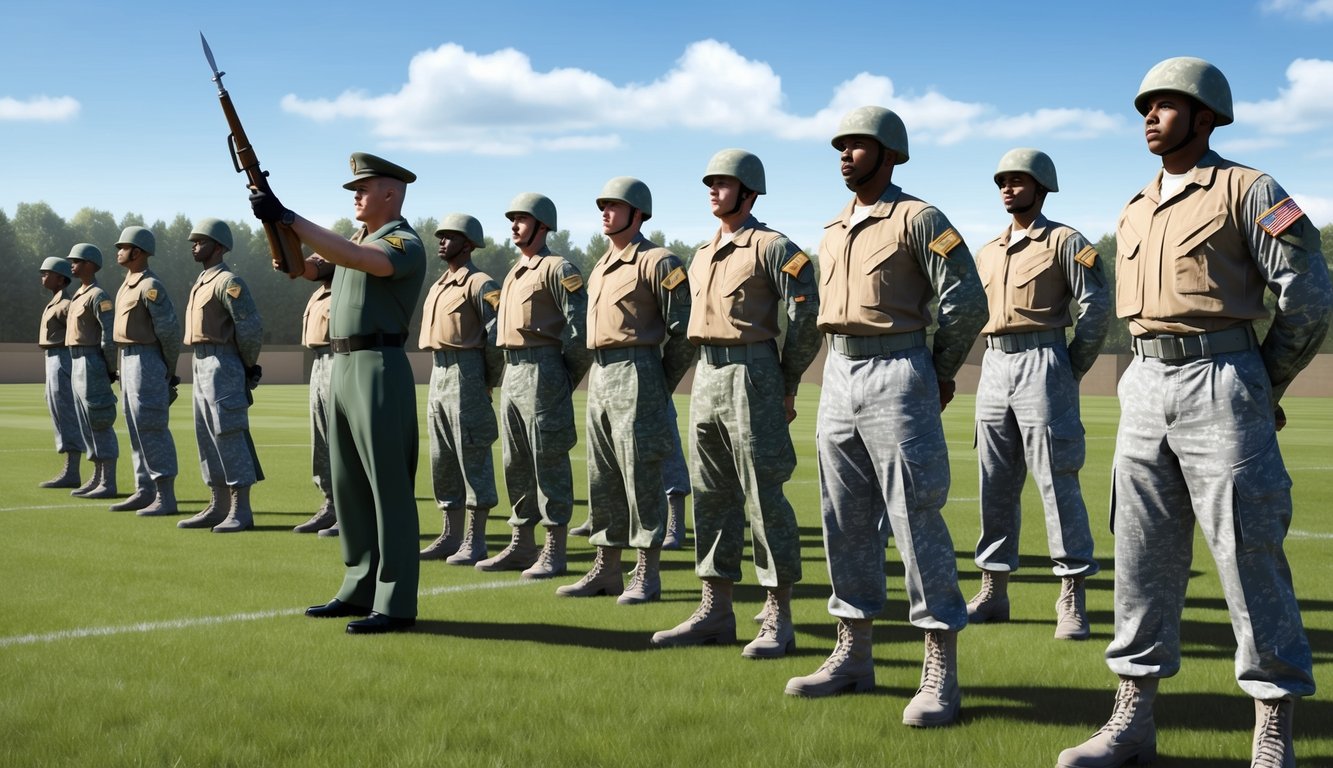
The 2024 Army Basic Training calendar delineates important dates and events for new recruits.
It details the enlistment process, training milestones, and graduation ceremonies slated for the year.
Key Dates and Events
Army Basic Training typically launches in late April 2024, with subsequent start dates scattered throughout the year.
Here are some significant dates to keep in mind:
- Classes Begin: Shortly after Martin Luther King Jr. Day
- 500th Night: Varies; check the official Army academic calendar
- Presidents Day: February 19, 2024
- Sandhurst Competition: Usually takes place in April
- Projects Day: Typically occurs in early May
Note that specific dates may differ depending on your training location and cycle.
It’s advisable to verify exact dates with your recruiter or the official Army website.
Enlistment and Reception Process
Your journey kicks off with the enlistment process.
Here’s what you can expect:
- Meet with a recruiter to explore career options
- Take the ASVAB test
- Complete a physical examination at MEPS
- Select your MOS and sign your contract
- Receive your ship date to Basic Training
Upon arriving at your training site, you will undergo a reception period, which usually lasts 3-5 days and includes:
- Processing paperwork
- Receiving your initial uniform and gear
- Haircuts and basic orientation
Graduation and Advanced Training
Basic Combat Training (BCT) generally lasts 10 weeks.
Your graduation date will depend on your start date, with attendance from family and friends commonly permitted at this significant event.
Following BCT, you will proceed to Advanced Individual Training (AIT) specific to your MOS.
The duration of AIT varies:
- Some roles may require just a few weeks
- Technical specialties could extend for several months
- Highly specialized positions might necessitate a year or more
Your total training duration, encompassing both BCT and AIT, will dictate when you are ready for your initial duty assignment.
Keep in communication with your chain of command for the latest updates regarding your training schedule.
Training Locations and Schedules
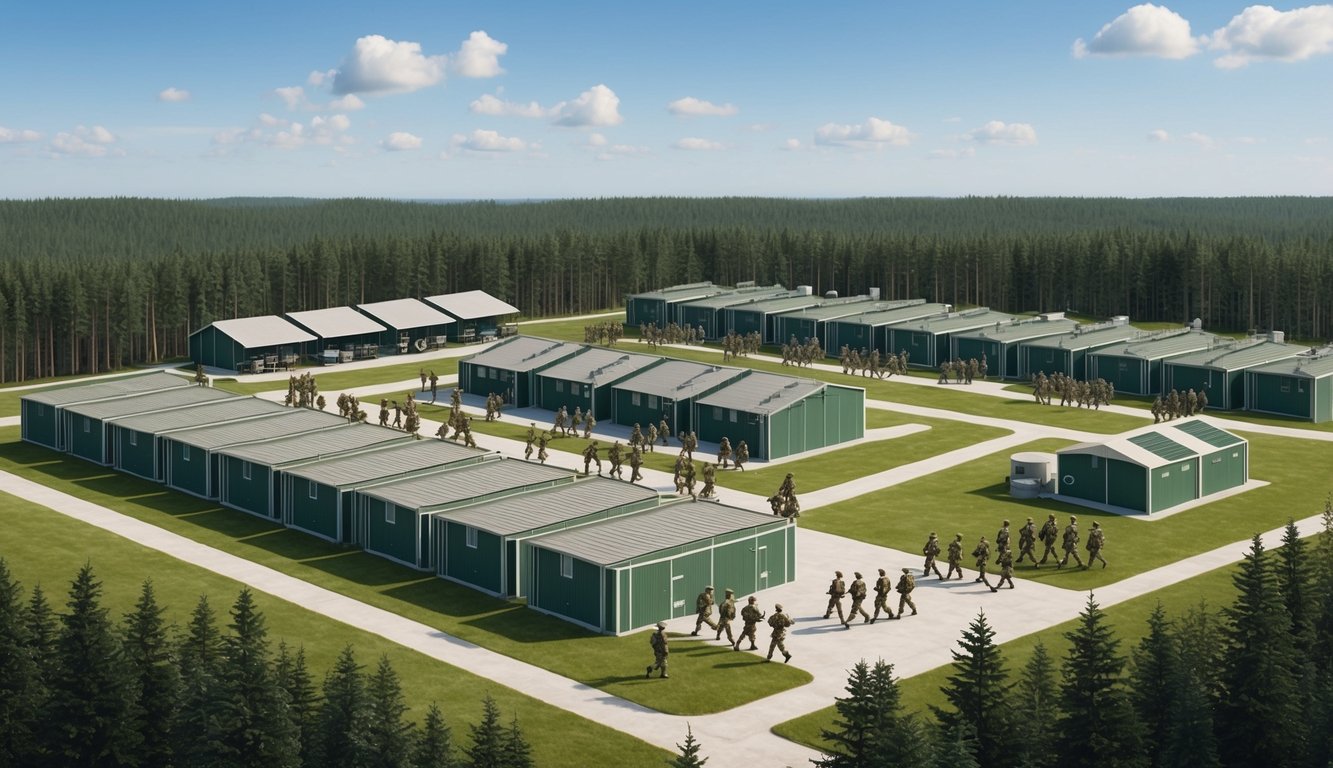
The U.S. Army conducts basic training at multiple locations each focusing on a structured timetable to successfully transition civilians into soldiers over a period of 10 weeks.
Fort Jackson and Other Training Posts
Fort Jackson in South Carolina is the largest basic training facility, processing over 50% of all new recruits.
Other important sites include Fort Leonard Wood in Missouri, Fort Sill in Oklahoma, and Fort Moore (formerly Fort Benning) in Georgia.
Each installation specializes in specific training areas.
Fort Jackson emphasizes support roles, whereas Fort Moore is dedicated to infantry and armor training.
Fort Leonard Wood focuses on military police and engineering, while Fort Sill is specialized in field artillery.
Your post assignment will be based on your selected Military Occupational Specialty (MOS) and the availability of space.
The Army strives for an even distribution of recruits across the various locations.
Training Schedule by Post
While the fundamental 10-week schedule remains consistent across posts, some variations exist:
- Fort Jackson: Highlights physical fitness early in training
- Fort Moore: Incorporates additional field exercises
- Fort Leonard Wood: Offers specialized engineering tasks
- Fort Sill: Includes artillery-specific training modules
Your day will generally commence at 5:00 AM with physical training, followed by classes and practical exercises throughout the day.
Evenings typically involve cleaning, studying, and preparing for the following day.
During weekends, you may engage in additional training or have limited personal time.
As you advance through your weeks, the intensity of the regimen will escalate.
Life During Basic Training
Basic training reshapes civilians into soldiers through rigorous physical and mental challenges.
You will experience a structured daily routine, develop teamwork abilities, and also encounter communication limitations.
Daily Routine and Teamwork
Your day typically starts early, generally around 5 AM.
You’ll quickly learn the importance of teamwork, whether during morning physical training, meals, or training exercises.
Everything is conducted collectively, promoting a deep sense of unity.
Discipline will become ingrained in your daily life as you adhere to a strict schedule.
You will have fixed times for meals, classes, and physical training.
Though free time may be limited, it will be used effectively to prepare uniforms, tidy your living area, or study.
Teamwork is essential.
You’ll depend on fellow recruits during obstacle courses, marches, and combat drills, creating bonds that help you navigate tough moments and realize seemingly impossible goals.
Physical and Mental Challenges
The physical training is demanding; expect to engage in push-ups, sit-ups, and run several miles each day.
The difficulty will increase as you progress, building your strength and stamina.
Equally important is mental resilience.
You’ll face challenges like sleep deprivation, stress, and homesickness.
Drill sergeants will require you to exceed your limits, teaching you to perform under pressure.
You’ll gain skills in combat techniques, weapon handling, and first aid.
Field exercises will test your ability to deploy these skills in simulated combat scenarios; while exhausting, it will be deeply rewarding as you see improvements.
Communication with the Outside World
Your contact with family and friends will be limited.
Expect occasional phone privileges, typically on weekends.
Letters will be your primary connection, providing essential support and encouragement.
Social media and personal electronic devices will not be allowed, enabling you to concentrate on training and foster camaraderie with fellow soldiers.
Although challenging, you will adapt quickly.
While care packages are permitted, contents are regulated.
Sharing treats with your platoon can uplift morale during hard times.
You will come to value simple comforts and the support from home.
Training Components and Skills Development
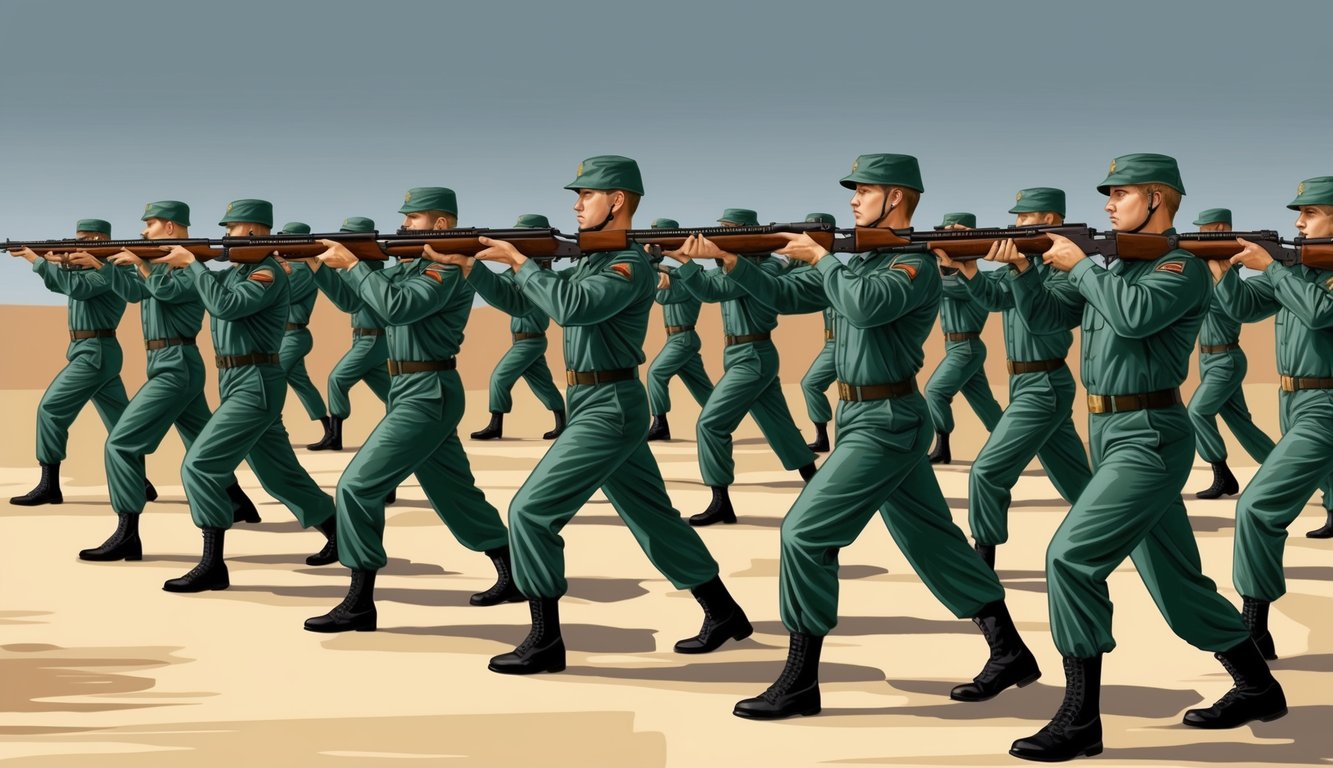
Army Basic Training readies you with vital military skills and knowledge.
You’ll acquire a diverse range of competencies essential for your role as a soldier.
Warrior Tasks and Battle Drills
Warrior Tasks and Battle Drills form the foundation of your combat readiness.
You will master essential skills like first aid, communication tactics, and movement techniques.
These drills prepare you for tangible scenarios you may encounter in the field.
Expect to practice reacting to engagements, executing disengagements, and evacuating injured personnel.
Land navigation will become instinctive as you learn to interpret maps and use compass tools.
Individual tactical training will refine your ability to engage, move, and communicate effectively in combat situations.
Marksmanship and Weapons Training
Marksmanship is a pivotal skill you will cultivate during Basic Training.
You’ll gain proficiency with the M16 rifle through hours at the firing range.
Key practices in weapon handling, maintenance, and safety will be reinforced throughout your training.
You will also receive practical experience with various weapon systems including machine guns, grenade launchers, and hand grenades.
Understanding how to identify and cope with different mines and unexploded ordnance will also be part of your training.
This instruction on weapon systems is not solely about shooting; it encompasses grasping their tactical uses and limitations in combat scenarios.
Field Training and Survival Skills
Field Training Exercises (FTX) grant you the opportunity to apply your skills within realistic scenarios.
You will spend several days in the field, living out of your rucksack and utilizing everything you’ve learned.
During these exercises, you will practice constructing shelters, purifying water, and foraging for food.
Land navigation competencies will be employed as you traverse unknown terrain.
You’ll also acquire essential camouflage and concealment methods.
Combatives training will teach you hand-to-hand combat techniques, boosting your confidence and physical fitness while preparing you for close-quarter confrontations.
Preparing for Basic Training
Preparing for Army Basic Training requires commitment and careful planning.
You should concentrate on physical fitness, gather necessary items, and mentally ready yourself for upcoming challenges.
Physical Fitness and Preparation
Begin your fitness regimen at least 3-4 months prior to your reporting date.
Focus on cardiovascular exercises such as running, push-ups, and sit-ups, aiming to run 2 miles in under 15-16 minutes.
Practice the events of the Army Combat Fitness Test, including the 3-rep max deadlift, standing power throw, hand-release push-ups, sprint-drag-carry, leg tuck or plank, and 2-mile run.
Gradually escalate your workout intensity, integrating strength training to enhance muscle stamina.
Stay hydrated and maintain a balanced diet with ample protein and complex carbohydrates.
What to Bring to Basic Training
Pack lightly; most items will be issued to you.
Ensure you have your valid ID and necessary documents, a small sum of cash, basic toiletries, a simple watch (no smartwatches), and white underwear and socks.
Avoid bringing expensive items, electronics, or civilian clothing (other than what you’re wearing).
Uniforms and gear will be provided, and expect to undergo a haircut upon arrival (short for men, styled to regulation standards for women).
Mental Readiness and Expectations
Mentally prepare for a demanding environment.
Basic Training will challenge your discipline and resilience.
Expect early starts and lengthy days, with a regimented schedule filled with rigorous physical training, the confidence course, and warrior tower challenges.
Build your mental toughness by establishing personal goals, practicing stress management strategies, and familiarizing yourself with basic military terminology and ranks.
Maintain a positive outlook and keep in mind your reasons for enlisting.
Your drill sergeants will stretch your capabilities, but their aim is to mold you into a skilled soldier.
Career Paths After Basic Training
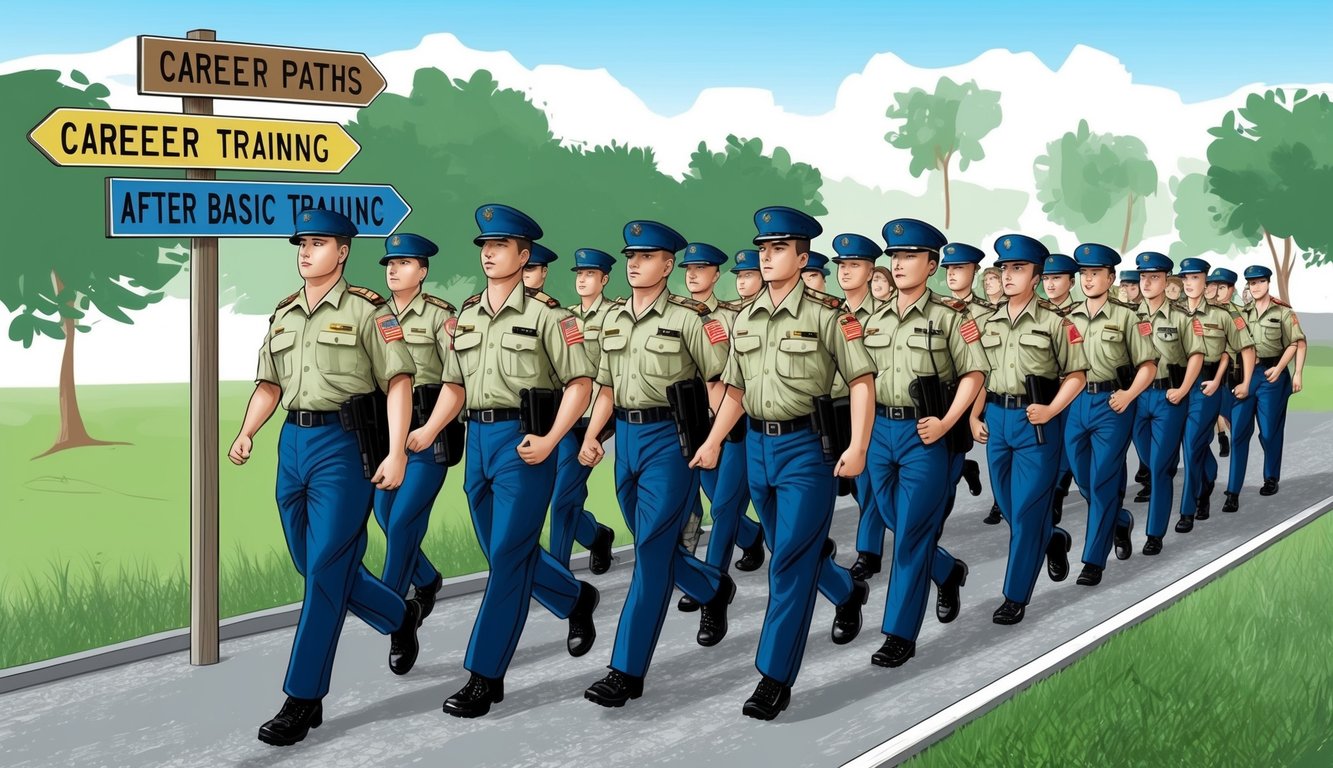
Upon completing Army Basic Training, you’ll discover numerous career opportunities to explore.
Your skills and interests will guide your military trajectory.
Branches and Specializations
The Army presents a broad spectrum of career paths.
Consider the infantry if you relish physically challenging work and tactical operations.
If law enforcement and security appeal to you, military police roles might be a fit.
Combat engineers specialize in construction and demolition tasks, ideal for those who enjoy hands-on problem-solving.
Each role offers specialized training.
Regardless of your chosen specialty, you will develop leadership abilities.
Your aptitude assessments and personal preferences will direct you towards the best match.
Transitioning to Active Duty or Reserves
Post-basic training, you have options concerning your service commitments.
Active duty requires full-time service, allowing you to live on base or at your assigned duty station.
This route ensures consistent pay and benefits while facilitating rapid skill enhancement.
The Army Reserve or National Guard enables you to serve part-time, letting you balance a civilian career while training one weekend each month and two weeks annually.
This option provides flexibility and additional income.
Your choice will significantly affect your day-to-day life.
Active duty immerses you immediately in military culture, whereas reserve components afford a balance between military obligations and other pursuits.
Frequently Asked Questions
The start dates and procedures for Army basic training can be perplexing for prospective recruits.
Here are answers to common queries regarding timetables, preparations, and logistics for 2024 basic training.
Can I choose my ship date for basic training?
Yes, you can select your ship date with some flexibility.
Collaborate with your recruiter to identify available dates that accommodate your schedule.
Note that popular times, such as summer, may have limited openings, so be ready with alternate options.
What is the timeline for Army basic training?
Army basic training spans 10 weeks, divided into three phases: Red, White, and Blue.
Each phase builds on the skills learned previously.
Graduation occurs after you successfully complete all phases and pass the final assessments.
What should I bring to Army basic training in 2024?
Travel light.
Bring necessary documents like your ID and Social Security card, along with a few days’ worth of comfortable clothing and running shoes.
The Army will supply uniforms and most other required items during training.
How frequently does Army basic training start throughout the year?
Basic training classes initiate regularly throughout the year, with new cycles typically beginning every few weeks.
The precise schedule varies by training location and current recruitment requirements.
What are the graduation dates for Army basic training in 2024?
Graduation dates are set 10 weeks after each class start date.
For specific dates in 2024, check with your recruiter or refer to the Army’s official training calendar.
Dates may be subject to slight adjustments based on holidays and other factors.
How do I learn about start dates for basic training at a specific Army base?
Contact your recruiter to find out the start dates for basic training at a specific Army base.
They have access to current schedules and can assist you in finding options that align with your preferences and qualifications.
“`

